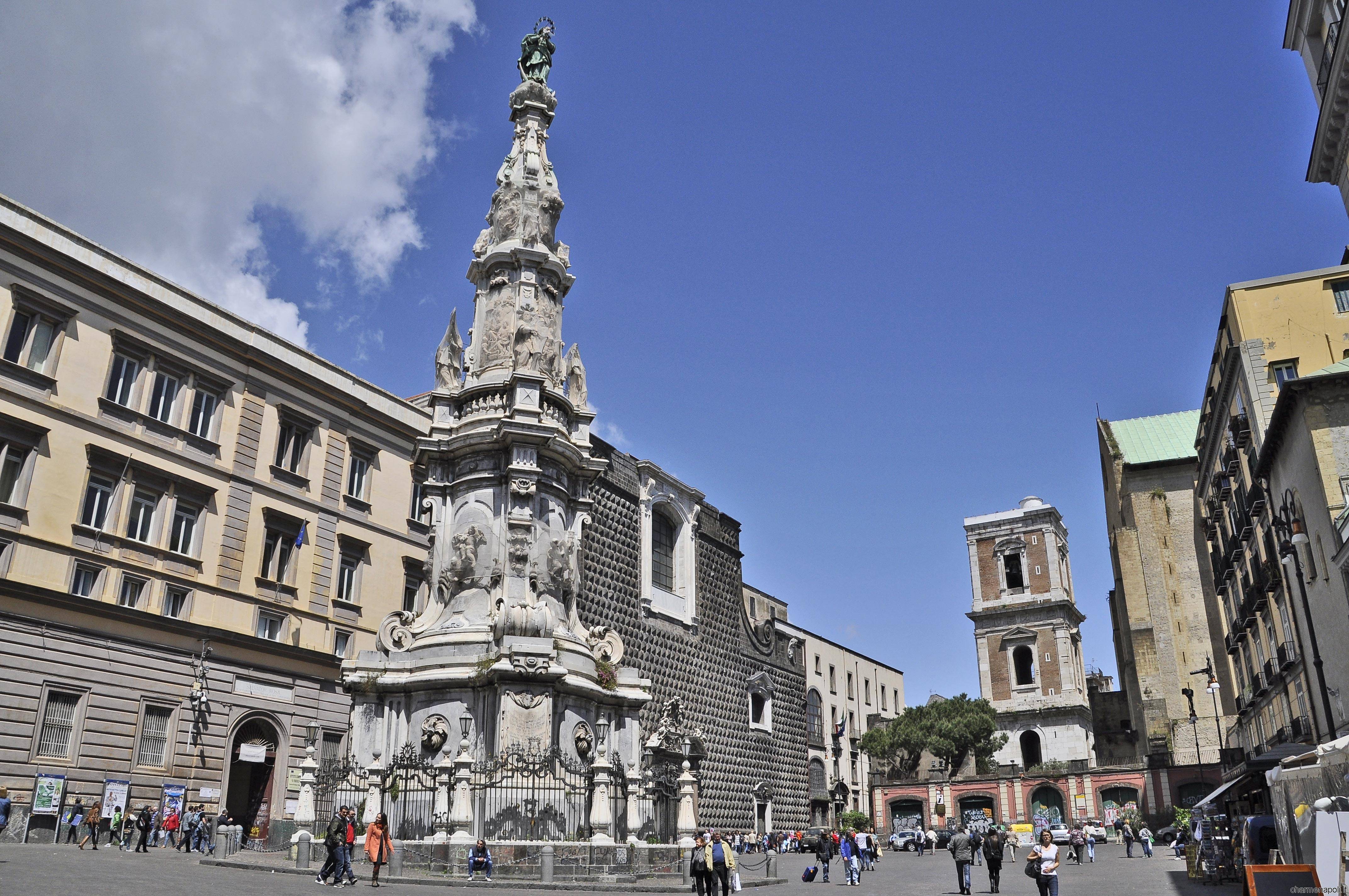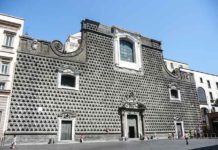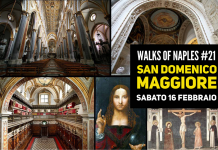There are paths that have to be made only on foot to enjoy the wonders of Naples: stunning panoramas, monuments, museums full of treasures, historical palaces. Let’s get on board! The itinerary proposed by “Charme” starts from the historical centre, whose historical evidences are preserved by Unesco.
Historical centre and Decumani
This is the heart of Graeco-Roman Neapolis. The area was chosen by the Greeks because it was repaired from flooding: a dedalus of long streets and narrow vicoli, intertwined with right angles, just like a Greek polis.
The part of the city between Castel Capuano and Castel Nuovo preserves many jewels: churches, palaces, spires, together with charming artisan shops, traditional restaurants and pizzerias.
Near Porta Capuana, close to Santa Caterina a Formiello church, stands Castel Capuano, a Norman fortress turned into a palace by Frederick II of Swabia and then into a law court by don Pedro de Toledo, a function kept until 2007.
From there begins the ancient via dei Tribunali from which depart the cardi joining it to Decumano inferiore, best known as “Spaccanapoli”, because it divides the centre in two, and to Decumano superiore, today via San Giovanni a Carbonara.
The most famous of cardi is via San Gregorio Armeno, the street of crèches, where every shop exhibits pastori and thousands of miniatures.
Along via dei Tribunali, there is the San Gennaro spire, dedicated to the city patron whose rest lay in the close cathedral devoted to Santa Maria Assunta (where every year the blood of the saint liquefies). Right in front of the obelisk there is the Pio Monte della Misericordia, founded in 1603 to help the poors, where the famous painting of Caravaggio “The seven acts of mercy” is kept.
Going towards San Gaetano square, there is San Paolo Maggiore basilica, the entrance to “Underground Naples”, where is possible to see the different phases of the urbanistic history of Naples, and the monumental complex of San Lorenzo Maggiore, with its Gothic church, the cloister, and the archaeological excavations. Not far there is the church of Santa Maria delle Anime del Purgatorio, famous for the cult of “capuzzelle”, the skulls that are cuddled by people to obtain a favour.
Few steps afar towers San Pietro a Majella church, a yellow tufa Gothic structure preceding the Regio Conservatorio. From here a descent goes to Santa Chiara, famous for its maiolica cloister with ancient Neapolitan “riggiole”.
In piazza del Gesù stands the tall Immacolata obelisk and the stunning Gesù Nuovo church.
Taking via Monteoliveto, one arrives in via Medina, near Maschio Angioino, the fortress started in 1279 and chosen by Charl I Anjou as his palace.

 Italiano
Italiano














